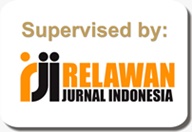Implementasi Agile Organization di Sektor Publik: Studi Kasus Kementerian Energi dan Sumber Daya Mineral
Abstract
This research aims to identify the variables influencing the success of organisasi agile implementation in the Ministry of Energy and Mineral Resources (KESDM), thereby developing a conceptual framework for agile implementation in the Ministry of Energy and Mineral Resources (KESDM).
Through this research, it can be determined the readiness of the Ministry of Energy and Mineral Resources (KESDM) in implementing organisasi agile and identify ways to overcome its challenges, thus making the transition process from waterfall system to agile system smoother. The researcher utilizes a mixed-method approach, combining literature review as a qualitative method followed by measurement using quantitative method.
From the literature review, a conceptual framework for organisasi agile implementation in the public sector is developed, consisting of variables such as leadership identity, process & value creating, strategy, structure, and technology, which is then used to measure the maturity level of agile implementation readiness. The measurement results indicate that the Ministry of Energy and Mineral Resources (KESDM) is positioned at a level of "defined and improved," with the technology variable scoring 4.039, followed by strategy, leadership identity, process, value creating, and structure. The "defined and improved" position implies that agile implementation in the Ministry of Energy and Mineral Resources (KESDM) still requires improvement to reach the sustain position.
Based on the findings of this research, it is hoped that the Ministry of Energy and Mineral Resources (KESDM) will continue to enhance the implementation of organisasi agile practices, thereby improving its services to all stakeholders.
Â
Â
Keywords
Full Text:
PDFReferences
Aldhaheri, R. T., & Ahmad, S. Z. (2023). Factors affecting organisations’ supply chain agility and competitive capability. Business Process Management Journal, 29(2), 505–527. https://doi.org/10.1108/BPMJ-11-2022-0579
Ali, P. R., Machfud, M., Sukardi, S., Noor, E., & Purnomo, D. (2023). Indonesian agroindustry business agility: Enablers and challenges in the poultry industry based on ISM model. Heliyon, 9(6), e16808. https://doi.org/https://doi.org/10.1016/j.heliyon.2023.e16808
Bouguerra, A., Gölgeci, I., Gligor, D. M., & Tatoglu, E. (2021). How do agile organ-izations contribute to environmental collaboration? Evidence from MNEs in Turkey. Jour-nal of International Management, 27(1), 100711. https://doi.org/https://doi.org/10.1016/j.intman.2019.100711
Chutivongse, N., & Gerdsri, N. (2020). Creating an innovative organization: Ana-lytical approach to develop a strategic roadmap guiding organizational development. Journal of Modelling in Management, 15(1), 50–88. https://doi.org/10.1108/JM2-05-2018-0067
ESDM. (2021). Permen ESDM No 15 Tahun 2021.
Fosso Wamba, S. (2022). Impact of artificial intelligence assimilation on firm per-formance: The mediating effects of organizational agility and customer agility. Interna-tional Journal of Information Management, 67, 102544. https://doi.org/https://doi.org/10.1016/j.ijinfomgt.2022.102544
Franco, C., & Landini, F. (2022). Organizational drivers of innovation: The role of workforce agility. Research Policy, 51(2), 104423. https://doi.org/https://doi.org/10.1016/j.respol.2021.104423
Giménez-Medina, M. (2020). Towards an agile innovation capability maturity framework to enhance investments on ICT organizations. In P. O. & C.-C. M. (Eds.), 32nd International Conference on Advanced Information Systems Engineering, CAiSE-DC 2020 (Vol. 2613, pp. 21–31). CEUR-WS. https://www.scopus.com/inward/record.uri?eid=2-s2.0-85091080714&partnerID=40&md5=7a21cd83c2ba0a81b9ed51abae4bb21d
Hohl, P., Klünder, J., Bennekum, A. van, Lockard, R., Gifford, J., Münch, J., Stupperich, M., & Schneider, K. (2018). Back to the future: origins and directions of the “Agile Manifesto†– views of the originators. Journal of Software Engineering Research and Development, 6(1), 1–27. https://doi.org/https://doi.org/10.1186/s40411-018-0059-z
Ju, X., Ferreira, F. A. F., & Wang, M. (2020). Innovation, agile project management and firm performance in a public sector-dominated economy: Empirical evidence from high-tech small and medium-sized enterprises in China. Socio-Economic Planning Scienc-es, 72, 100779. https://doi.org/https://doi.org/10.1016/j.seps.2019.100779
Limaj, E., & Bernroider, E. W. N. (2022). A taxonomy of scaling agility. The Journal of Strategic Information Systems, 31(3), 101721. https://doi.org/https://doi.org/10.1016/j.jsis.2022.101721
Mc Kinsey. (2017). The 5 Trademarks of Agile Organizations.
Mergel, I., Gong, Y., & Bertot, J. (2018). Agile government: Systematic literature re-view and future research. Government Information Quarterly, 35(2), 291–298. https://doi.org/https://doi.org/10.1016/j.giq.2018.04.003
Moi, L., & Cabiddu, F. (2021). An agile marketing capability maturity framework. Tourism Management, 86, 104347. https://doi.org/https://doi.org/10.1016/j.tourman.2021.104347
Ridwandono, D., & Subriadi, A. P. (2019). IT and Organizational Agility: A Criti-cal Literature Review. Procedia Computer Science, 161, 151–159. https://doi.org/https://doi.org/10.1016/j.procs.2019.11.110
Saghafian, M., Laumann, K., & Skogstad, M. R. (2021). Organizational Challenges of Development and Implementation of Virtual Reality Solution for Industrial Operation. Frontiers in Psychology, 12. https://doi.org/10.3389/fpsyg.2021.704723
Stephen Denning. (2018). The Age of Agile: How Smart Companies Are Trans-forming the Way Work Gets Done. In AMACOM American Management Association (Ed.), Quality Progress (Vol. 51, Issue 9). https://www.barnesandnoble.com/w/the-age-of-agile-stephen-denning/1126258594
Troise, C., Corvello, V., Ghobadian, A., & O’Regan, N. (2022). How can SMEs suc-cessfully navigate VUCA environment: The role of agility in the digital transformation era. Technological Forecasting and Social Change, 174, 121227. https://doi.org/https://doi.org/10.1016/j.techfore.2021.121227
Uludağ, Ö., Philipp, P., Putta, A., Paasivaara, M., Lassenius, C., & Matthes, F. (2022). Revealing the state of the art of large-scale agile development research: A system-atic mapping study. Journal of Systems and Software, 194, 111473. https://doi.org/https://doi.org/10.1016/j.jss.2022.111473
Ungureanu, P., Rietti, D., & Giustiniano, L. (2018). How does organizational space help organizations cope with the challenges of ambidexterity and continue to innovate? A space reorganization experiment in a transitioning organization. CERN IdeaSquare Jour-nal of Experimental Innovation, 2(1), 38–45. https://doi.org/10.23726/cij.2018.747
WORLEY, C. G., & LAWLER, E. E. (2010). Agility and Organization Design: A Di-agnostic Framework. Organizational Dynamics, 39(2), 194–204. https://doi.org/https://doi.org/10.1016/j.orgdyn.2010.01.006
Article metrics
DOI:

